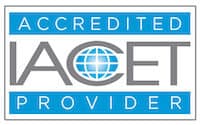Susan Riley | March 2013
Screaming for Scratch Paper
Have you ever noticed that when you administer any high-stakes test, you always receive scratch paper in your testing box? Why is that? After all, when the tests are collected, the scratch paper is sometimes collected with it, but it certainly doesn't "count" for the test scores. Do our students even need the scratch paper or is it a waste of trees?
Actually, there's evidence out there that letting students have access to and use scratch paper is a way to activate both sides of the brain simultaneously. It's fascinating to see this in action. I will never forget helping to proctor a summative math test one year and walking around the room watching the students taking their tests. Many were working diligently on each problem, in sequential order. But then, there were a few that were simply drawing on their scratch paper.
Drawing!
Not taking the test, not working to solve the problem. Doodling images on their scratch paper using variants in shading and line. They were beautiful doodles, but they didn't have anything to do with the test. I got out of my chair at the front of the room to approach the students to remind them about the importance of this test and that they needed to stop their sketching and move into testing mode.
But something made me stop.
I just waited and observed these students for a moment. And then, something extraordinary happened.
After a few minutes of this drawing process, they stopped what they were doing and went back into the test. They started to answer the questions at a furious pace, and as I walked around to view how they were doing, I was surprised to see that they were getting each answer correct as they moved through the section. When each of them came to a question that gave them a little trouble, they each went back to drawing on their scrap paper. A few minutes later, the same thing happened again. They moved away from their scratch paper and into the test.
Those students received some of the highest scores in their whole grade level that year. I truly believe it had everything to do with that scratch paper and being allowed to work through the problem in their own way – as out-of-the-box as that may seem to an outsider. They were allowed to puzzle through it, activate their creative brain and solve the answer for themselves.
I'm so glad that I didn't stop these students, but instead stopped myself from interfering with their process. Yet, how many times do we remove the proverbial scratch paper from our students to "keep them on track"? Are we removing distractions or installing a new barrier? Instead, maybe we should make scratch paper mandatory for every class and give our students time to make their thinking process more visible. Then, we can get out of the way and watch innovation take place.



